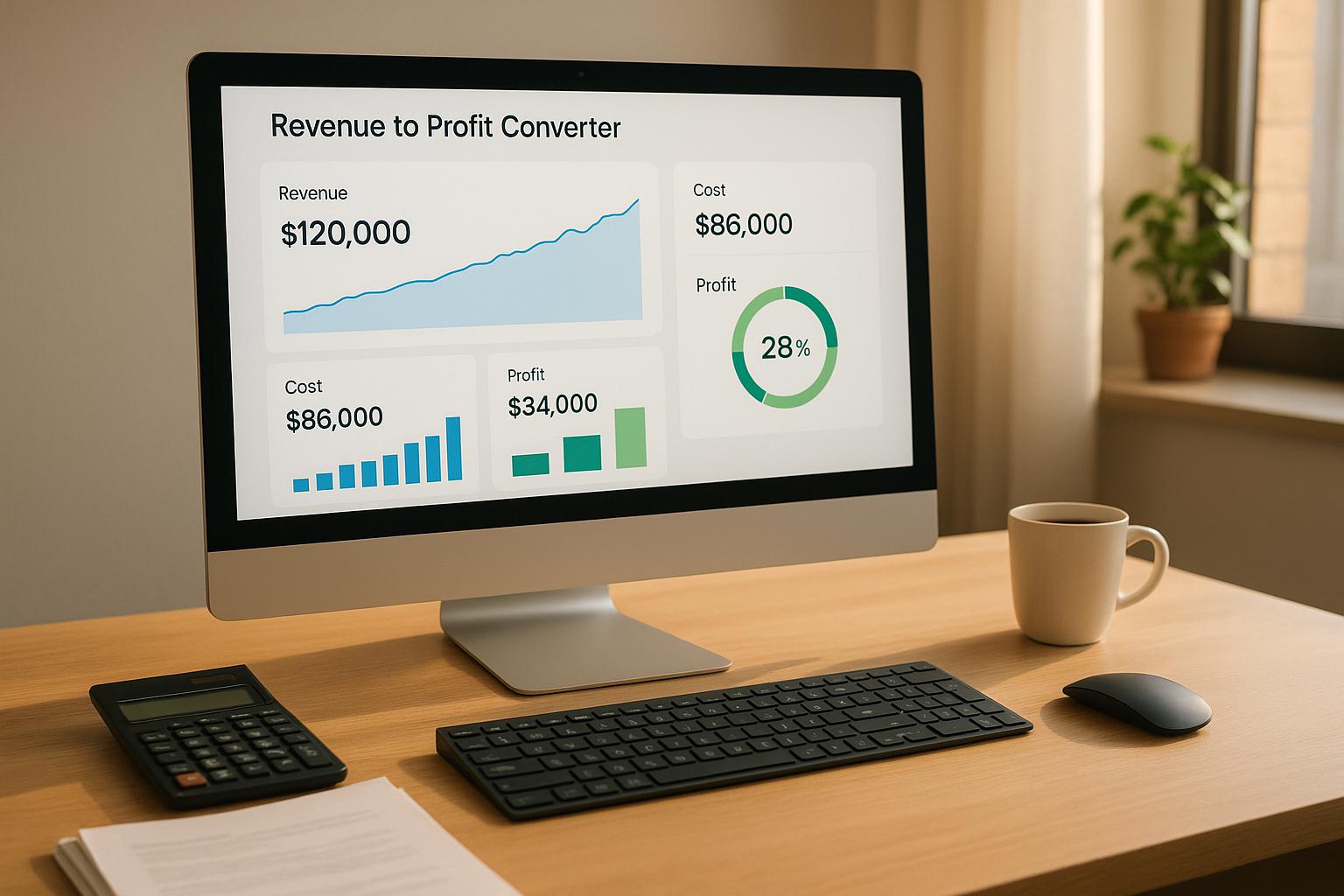Cost of Capital Adjustments for Country Risk

Investing in renewable energy projects in emerging markets comes with unique challenges - especially when factoring in country-specific risks. These risks, like political instability, currency fluctuations, and regulatory uncertainty, can significantly increase the cost of capital, often making or breaking a project’s feasibility.
Here’s what you need to know:
- Cost of Capital Basics: The cost of capital combines the cost of debt and equity into the Weighted Average Cost of Capital (WACC). In high-risk markets, WACC can reach up to 27.5%, compared to as low as 4.3% in stable regions.
- Country Risk Premiums: Risks like political instability can add 100–500 basis points, currency volatility 200–400 basis points, and weak power purchase agreements (PPAs) 100–300 basis points to the cost of capital.
- Key Risks: Political uncertainty, currency devaluation, regulatory unpredictability, and market volatility are the primary factors driving up financing costs.
- Mitigation Strategies: Tools like political risk insurance, concessional loans, and long-term PPAs with reliable off-takers can help reduce risk premiums.
Why it matters: For renewable energy projects, capital costs often account for 40–60% of total expenses. Even a small increase in risk premiums can push a project into unviable territory. Adjusting for country risk ensures accurate valuations and better decision-making for investors and entrepreneurs.
Main Country Risks Affecting Cost of Capital
When it comes to valuing renewable energy projects, understanding risks tied to political instability, currency swings, and market uncertainties is crucial. These factors can significantly increase financing costs, making some projects less viable. Let’s break down three major types of country risks that can drive up costs and complicate project development.
Political and Government Risk
Political instability and sudden policy changes are among the biggest challenges for renewable energy financing. When governments shift policies unexpectedly or political climates become uncertain, investors demand higher returns to offset the risks.
For instance, political and government risks can add as much as 500 basis points (5%) to the cost of capital. In highly unstable markets like Yemen, the weighted average cost of capital (WACC) can soar to 27.53%, compared to much lower levels in more stable regions.
Real-world examples highlight how damaging policy changes can be. In Spain, retroactive adjustments to feed-in tariffs caused investor premiums to spike, delaying projects as lenders reevaluated risks. Similarly, the abrupt removal of renewable energy subsidies in the UK forced developers to look for alternative financing at higher rates. In some emerging markets, the threat of expropriation has scared off foreign investors altogether.
These policy shifts don’t just hurt individual projects - they ripple through the entire financing ecosystem. When governments undermine investor confidence, future projects face higher risk premiums, creating a cycle of uncertainty. Political instability can also erode the reliability of regulatory frameworks and contract enforcement, especially in countries where corruption or weak institutions are prevalent.
On top of political risks, currency fluctuations and regulatory changes add another layer of complexity to financing renewable energy projects.
Currency and Regulatory Risk
Exchange rate volatility and regulatory unpredictability are major hurdles, especially for projects relying on international financing. These risks directly affect both project costs and returns.
Currency risk becomes a critical issue when project revenues are in local currency but debts are in U.S. dollars. In countries with highly volatile currencies, like Nigeria or Argentina, required equity returns for climate projects can exceed 30%. By contrast, in more stable markets, returns typically range between 8–12%. This stark contrast reflects the need for investors to hedge against currency devaluations that could eat into their returns.
Regulatory risk, on the other hand, involves sudden changes in permitting, grid access rules, or environmental standards, all of which can drive up costs. For example, the global shift from feed-in tariffs to auction systems has introduced new market risks. While auctions can lower prices and increase competition, they also create revenue uncertainty. This uncertainty has led to price cannibalization in solar-heavy markets, where an oversupply of energy pushes prices down, threatening project profitability.
After addressing political, currency, and regulatory risks, it’s essential to consider risks tied to power purchase agreements (PPAs) and market dynamics.
Power Purchase Agreement and Market Risks
Revenue certainty is a key factor in project bankability, and it’s heavily influenced by off-taker credit risk and market volatility. The strength of power purchase agreements (PPAs) and the stability of energy markets play a big role in determining financing costs.
Off-taker credit risk - the possibility that utilities might fail to meet payment obligations - is a significant concern, especially in developing economies. Utilities with weak financial health can lead to delayed payments or defaults, prompting investors to demand higher returns to compensate for the added risk.
Market price volatility also poses challenges for projects tied to spot markets or short-term contracts. As renewable energy penetration grows, price cannibalization has become more common, particularly in regions with high solar deployment. Excess energy supply during peak generation periods can push market prices down, reducing project revenues and increasing the risk premiums required by investors.
The structure and duration of PPAs further influence risk perception. Short-term contracts or those without clear renewal terms create uncertainty around future revenues. Similarly, agreements with financially unstable counterparties or insufficient payment guarantees can drive up financing costs.
| Risk Category | Impact on WACC | Key Examples | Mitigation Strategies |
|---|---|---|---|
| Political/Government | +100–500 basis points | Spain's tariff changes, UK subsidy cuts | Political risk insurance, government guarantees |
| Currency/Regulatory | +200–400 basis points | Nigeria/Argentina currency volatility | USD contracts, regulatory engagement |
| PPA/Market | +100–300 basis points | Utility credit risk, price cannibalization | Stronger off-taker agreements, long-term contracts |
These risks don’t operate in isolation - they often overlap, creating intricate challenges that require careful analysis and tailored mitigation strategies.
Methods for Country Risk Adjustments
In this section, we dive into how to adjust the cost of capital to account for country-specific risks. This is a critical step since the cost of capital often represents 40–60% of total project costs in emerging markets. Let’s explore the methods used to quantify these risks and integrate them into capital cost calculations.
Calculating Country Risk Premiums
A common approach to account for country risks is the build-up method, which quantifies how each risk factor impacts the cost of capital. This method starts with a base rate and adds premiums for specific risks, often using the Capital Asset Pricing Model (CAPM) as a foundation - modified to include climate investment risks. The process evaluates three core risk areas: sovereign credit risk, political risk, and off-taker credit risk. A structured framework like the Climate Investment Risk Score (CIRS) methodology helps quantify these risks and determine the additional returns investors and lenders might require.
For example, research on Flexible Demand Response and Energy Storage projects in India reveals that country-specific risks can increase the cost of capital by as much as 300 basis points (or 3 percentage points). When using P90 estimates, this could result in a total cost of capital of around 9.4%. The build-up method aggregates all these risk premiums to arrive at a final figure.
Data Sources and Benchmarks
Accurate data is essential for validating country risk adjustments and ensuring calculations align with market conditions. Several trusted organizations provide reliable benchmarks for renewable energy projects. For instance:
- International Renewable Energy Agency (IRENA): Offers detailed cost of capital data across regions and technologies. Their studies predict declines exceeding 100 basis points for offshore wind projects in Asia-Pacific and solar photovoltaic projects in Europe, the Middle East, and Africa by 2025.
- S&P Sovereign Credit Ratings: Used to assess sovereign risk.
- Political Risk Services (PRS): Provides Political Risk Scores to evaluate political stability.
- International Energy Agency (IEA) and OECD: Supply additional benchmarks for market and regulatory risks.
These datasets establish baseline cost of capital figures tailored to a country, technology, and project stage. From there, adjustments can be made for project-specific factors. However, it’s important to compare projects in similar environments. For instance, a solar project in Morocco may face different risks compared to one in Nigeria, even though both are in Africa. Matching your project’s risk profile to relevant data ensures more accurate adjustments.
Scenario Modeling and Sensitivity Analysis
Once benchmarks are established, scenario modeling can help measure the impact of risks on a project’s overall feasibility. Using range-based models like P50 (median risk) and P90 estimates allows you to account for a variety of potential outcomes.
For renewable energy projects, which often involve high upfront costs and low operating expenses, even small shifts in the cost of capital can significantly affect total project costs over decades. Sensitivity analyses can test how variables like interest rates, inflation, exchange rates, and macroeconomic conditions influence project returns. You can also focus on project-specific factors tied to the technology or market.
Running multiple scenarios identifies which country risk factors have the biggest impact on project viability. This insight helps prioritize risk mitigation strategies. For instance:
- If currency risk is a major issue, securing U.S. dollar–denominated contracts or implementing hedging measures could help.
- If political risk dominates, options like political risk insurance or government guarantees may lower the risk premium.
These strategies allow investors to adjust project valuations more accurately, aligning them with market realities and improving the overall risk-adjusted valuation process.
sbb-itb-e766981
Impact on Growth Companies and Financial Advisory
In emerging markets, country risk adjustments can significantly raise capital costs, directly affecting the feasibility of projects and access to funding.
Effects on Project Viability
When country risks drive up capital costs, projects in these regions often struggle to compete with those in more stable markets. The increased demands for returns put additional pressure on companies with limited access to funding.
Take, for instance, the shift from feed-in tariffs to auction systems in several regions. This change introduced greater market volatility and reduced guaranteed pricing, which led to higher risk premiums. As a result, projects that were once financially viable became unworkable, forcing companies to either abandon them or find alternative financing solutions.
In India, delays in project commissioning and uncertainties surrounding battery storage technology have further escalated capital costs, undermining project feasibility. For growth companies operating in such environments, these elevated costs must be factored into feasibility studies and investor communications.
The impact is stark: capital costs often account for 40% to 60% of total project expenses. Even a modest increase in risk premiums - such as a 300 basis point rise - can push the total cost of capital to 9.4% or more. This can render projects uncompetitive when compared to conventional energy options.
Under these financial pressures, implementing strategies to reduce risks becomes essential to maintaining project viability.
Risk Reduction Methods
To address these challenges, growth companies can use a range of strategies that transfer or share risks with other parties, improving the financial outlook of their projects.
- Payment guarantees: These ensure stable revenue streams when off-takers have uncertain creditworthiness. Governments, development banks, or international organizations often provide such guarantees, reducing concerns about non-payment.
- Concessional finance: Development banks and international institutions offer loans at below-market interest rates. These loans can offset high commercial lending rates, making projects more viable.
- Institutional support: Tools like sovereign guarantees, political risk insurance, and backing from multilateral organizations protect against risks such as policy changes, currency devaluation, or political instability.
- Public funds or grants: By pooling risks across multiple projects, these funds help reduce individual project risk premiums. Additionally, insurance products can shield projects from specific risks like expropriation or political violence.
Phoenix Strategy Group's Risk-Adjusted Valuation Services

Phoenix Strategy Group (PSG) specializes in helping companies navigate these challenges with tailored advisory services that focus on optimizing risk-adjusted valuations.
Their fractional CFO services include scenario analysis and sensitivity testing, which are designed to account for country-specific risks. This helps companies understand how political, regulatory, and market factors impact project valuations and investment decisions.
PSG’s FP&A systems provide real-time monitoring of country risk conditions. These systems are particularly useful for companies operating in multiple markets, as they integrate financial models that automatically adjust for varying risk profiles.
Through their M&A advisory services, PSG assists clients in structuring deals that include critical risk mitigation tools like payment guarantees, concessional financing, and institutional support. These measures help lower the overall risk profile of projects.
"PSG and David Metzler structured an extraordinary M&A deal during a very chaotic period in our business, and I couldn't be more pleased with our partnership." - Lauren Nagel, CEO, SpokenLayer
PSG also leverages advanced data engineering to create detailed risk models. By using benchmarks such as sovereign credit ratings and political risk scores, they ensure that country risk adjustments are based on reliable and up-to-date data.
For companies seeking funding, PSG’s expertise in fundraising support includes preparing risk-adjusted valuations that align with investor expectations while reflecting the realities of the projects. With a track record of raising over $200 million for portfolio companies, they have proven their ability to present complex, risk-adjusted projects effectively to investors.
Their approach focuses on identifying cost-effective risk mitigation tools tailored to specific projects and markets. This ensures growth companies can balance risk and return while keeping their projects financially viable.
Conclusion: Main Points and Next Steps
Key Findings Summary
Country risk adjustments play a crucial role in shaping valuations and guiding investment decisions in renewable energy projects. In high-risk scenarios, these adjustments can increase capital costs by as much as 300 basis points, pushing total financing costs to approximately 9.4%. For emerging markets, where capital costs typically account for 40-60% of total project expenses, equity investors often expect returns of 15-20%, while lenders demand interest rates of at least 13%.
To properly quantify risks, it's essential to enhance the Capital Asset Pricing Model (CAPM) by incorporating country risk premiums, use scenario modeling (such as P50/P90 analyses), and apply composite risk scores that combine sovereign, political, and offtaker risks. These methods provide a structured way to adjust discount rates in response to changing market conditions.
Mitigating risks is equally important to ensure project feasibility. Tools like political risk insurance, concessional financing, institutional support, and public funding mechanisms can significantly lower project risk premiums, making investments more competitive.
These findings offer actionable guidance for investors and entrepreneurs aiming to succeed in this challenging landscape.
Action Steps for Entrepreneurs and Investors
Here are some practical steps to take based on these insights:
- Adopt a detailed risk assessment framework: Use data from established sources like S&P, Moody's, Fitch, or political risk indices from organizations such as the PRS Group to ensure accurate risk evaluations.
- Incorporate risk premiums into financial models: Adjust both debt and equity discount rates systematically to reflect the realities of financing conditions, ensuring valuations are grounded in market dynamics.
- Perform regular scenario analyses: Test project resilience under different risk conditions to identify vulnerabilities and refine strategies as political and economic climates shift.
- Seek expert financial advice: For entrepreneurs scaling renewable energy ventures, collaborating with firms like Phoenix Strategy Group - specialists in risk-adjusted valuations - can provide critical insights for navigating complex cross-border investments.
- Maintain clear documentation: Transparently record all risk adjustment methodologies to build trust with stakeholders and demonstrate robust financial planning.
- Actively mitigate risks: Use strategies such as political risk insurance, solid power purchase agreements with reliable offtakers, currency hedging, and guarantees from multilateral agencies. These measures can significantly reduce financing costs and enhance project bankability.
FAQs
How do political and currency risks affect the cost of capital for renewable energy projects in emerging markets?
Political and currency risks can dramatically drive up the cost of capital for renewable energy projects in emerging markets. For instance, political instability - like sudden changes in government policies or shifts in regulatory frameworks - can create an environment of uncertainty. This uncertainty makes investors more cautious, often resulting in higher financing costs. On top of that, local currency fluctuations against the U.S. dollar add another layer of risk. This is particularly challenging when project revenues are earned in local currency, but loans or debts are issued in foreign currency.
To mitigate these risks, investors typically demand higher returns, which, in turn, increases the overall cost of capital. Factoring in these risks during project valuation is essential for accurate financial planning and effective risk management in renewable energy ventures within these regions.
How can investors address country-specific risks when evaluating renewable energy projects?
Country-specific risks - like political instability, currency swings, or unclear regulations - can heavily influence the cost of capital when investing in renewable energy projects. To navigate these challenges, investors can implement a few practical strategies:
- Spread investments geographically: Putting money into projects across different countries or regions helps reduce dependence on a single market, minimizing risk.
- Manage currency exposure: Tools like forward contracts can shield investments from unpredictable currency changes.
- Collaborate with local stakeholders: Building strong ties with local governments, communities, and partners can provide valuable insights into navigating regulations and cultural dynamics.
- Consider insurance options: Political risk insurance or other specialized coverage can offer a safety net against unexpected disruptions.
These strategies, when integrated into project evaluations, allow investors to better account for country-specific risks, leading to more informed and resilient investment decisions.
How can scenario modeling and sensitivity analysis guide investors in managing risks in volatile markets?
Scenario modeling and sensitivity analysis play a key role in evaluating potential outcomes and gauging the financial impact of country-specific risks, particularly in unpredictable markets. By simulating different scenarios - like shifts in interest rates, currency value changes, or new regulatory policies - investors can better understand how these factors might affect the cost of capital for renewable energy projects.
These approaches also allow investors to measure uncertainties and challenge their assumptions, leading to more informed decisions. By examining best-case, worst-case, and most likely scenarios, investors can anticipate risks more effectively and allocate resources wisely, helping to maintain stronger and more reliable project valuations.




